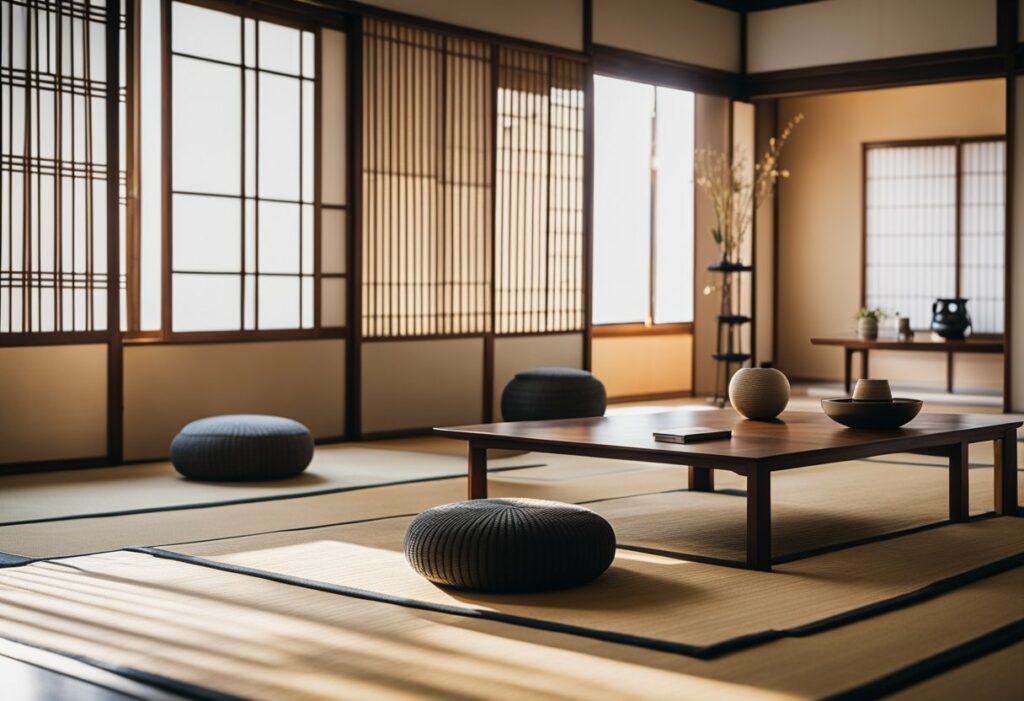Tatami Living Room Design: Embrace Japanese Aesthetics in Your Home
If you’re looking to create a peaceful and calming atmosphere in your living room, then a tatami living room design may be just what you need. Tatami is a type of mat used as flooring in traditional Japanese homes. It is made of woven rush grass and is soft to the touch, giving it a comfortable and natural feel. The mats are durable and can last for many years with proper care.
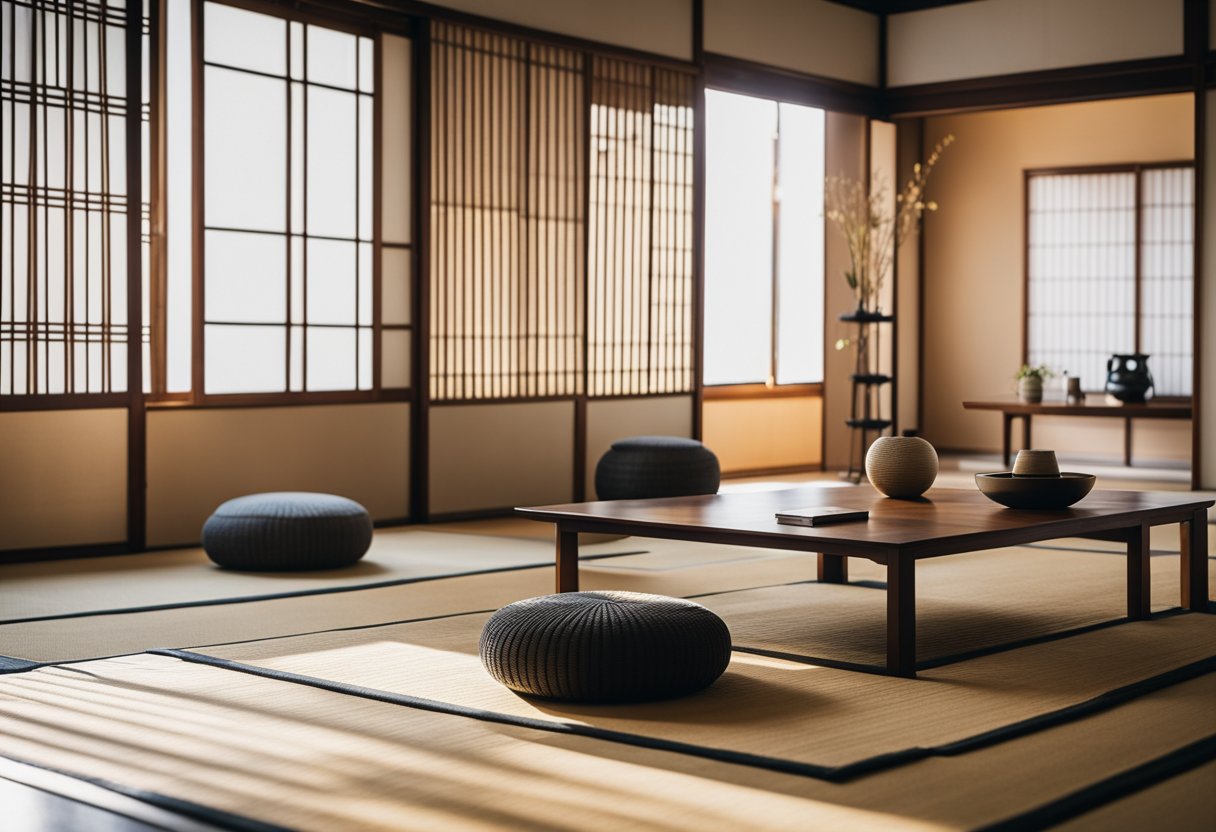
Fundamentals of Tatami Living Room Design
When designing your tatami living room, it’s important to keep in mind the fundamentals of Japanese design. The Japanese aesthetic is known for its simplicity, minimalism, and focus on natural materials. In a tatami living room, this means using neutral colours, natural materials like wood and paper, and incorporating elements of nature like plants and stones.
Creating Your Tatami Living Space
To create your own tatami living space, start by measuring the room and determining how many tatami mats you will need. Tatami mats come in standard sizes, so you can easily calculate how many you will need based on the size of your room. Once you have your tatami mats, you can begin designing your space. Consider adding a low table and cushions for seating, shoji screens to divide the room, and a tokonoma, which is a traditional alcove used for displaying art and seasonal decorations.
Key Takeaways
- Tatami living room design is a great way to create a peaceful and calming atmosphere in your home.
- When designing your tatami living room, keep in mind the fundamentals of Japanese design, such as simplicity and natural materials.
- To create your own tatami living space, measure the room, determine how many tatami mats you will need, and consider adding traditional elements like a low table and cushions, shoji screens, and a tokonoma.
Fundamentals of Tatami Living Room Design
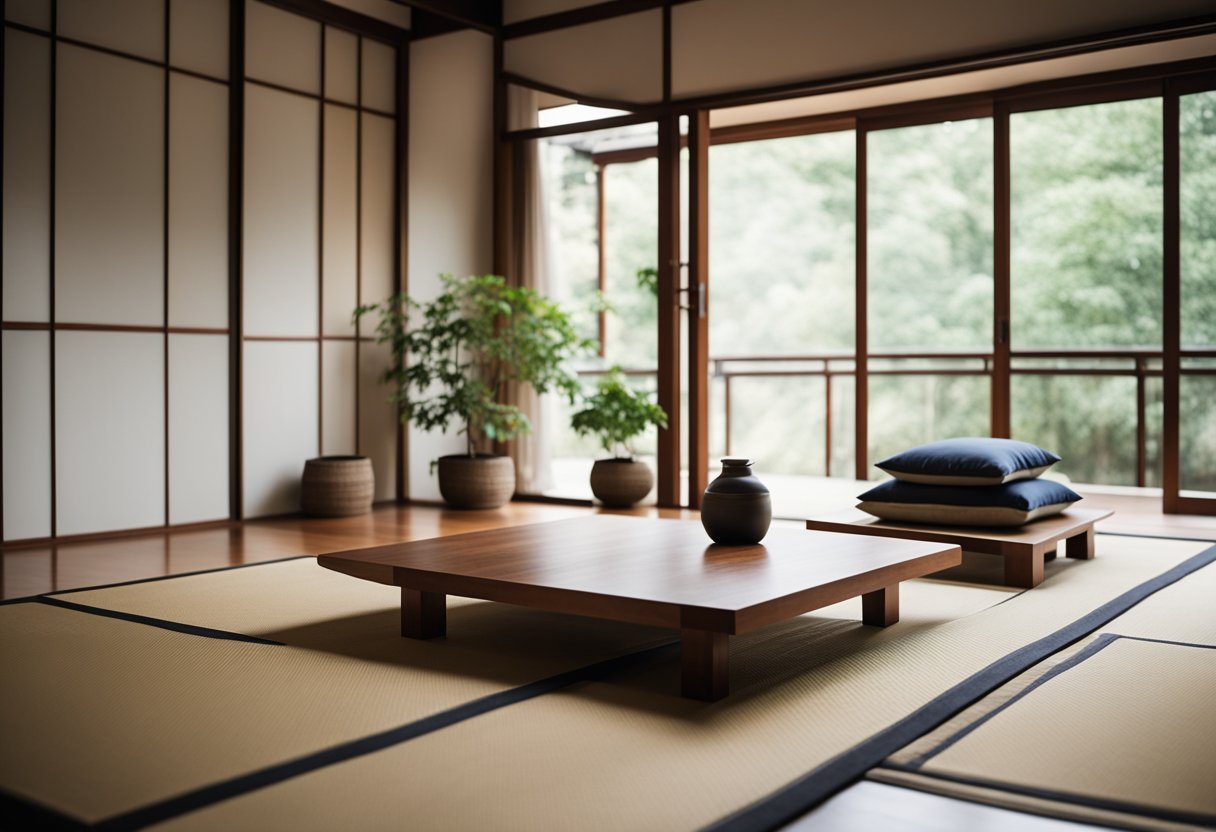
If you’re looking to create a traditional Japanese living room, tatami design is a must-have. Tatami rooms are a staple in Japanese homes, and they have a rich history that dates back to the Heian period. In this section, we’ll explore the fundamental elements of tatami living room design.
Historical Evolution
The tatami room has been a part of Japanese culture for centuries. During the Heian period, tatami mats were used as a sign of wealth and nobility. As time passed, samurai and commoners began to use tatami mats in their homes as well. The design of the tatami room has remained consistent over the centuries, with low tables and cushions scattered around the edge of the mat, while a tokonoma is placed in the centre, typically reserving space for artwork, symbolic flowers and seasonal decorations.
Understanding Tatami Mats
Tatami mats are made from natural materials such as rice straw, rush grass, and igusa. These materials are woven together to create a mat that is both comfortable and durable. Tatami mats are typically 90cm x 180cm in size, and they have a thickness of around 5cm. The mats are designed to be soft and absorbent, which makes them perfect for sitting and sleeping.
Design Elements for Tatami Rooms
When designing a tatami living room, there are a few key elements to consider. First and foremost, you’ll want to make sure that your room has enough space for the tatami mats. You’ll also want to consider the layout of the room, as tatami rooms typically have a minimalist design. Finally, you’ll want to choose furniture and decor that complements the natural beauty of the tatami mats.
Some design elements to consider when designing your tatami living room include:
- Natural lighting: Tatami rooms are designed to be bright and airy, so make sure to let in plenty of natural light.
- Minimalist furniture: Tatami rooms typically have low tables and cushions for seating, so choose furniture that is simple and unobtrusive.
- Natural materials: To complement the natural beauty of the tatami mats, choose decor and furniture made from natural materials like wood and bamboo.
- Seasonal decorations: Tatami rooms often feature seasonal decorations like flowers and artwork, so consider incorporating these elements into your design.
By following these design principles, you can create a beautiful and authentic tatami living room that captures the essence of traditional Japanese design.
Creating Your Tatami Living Space
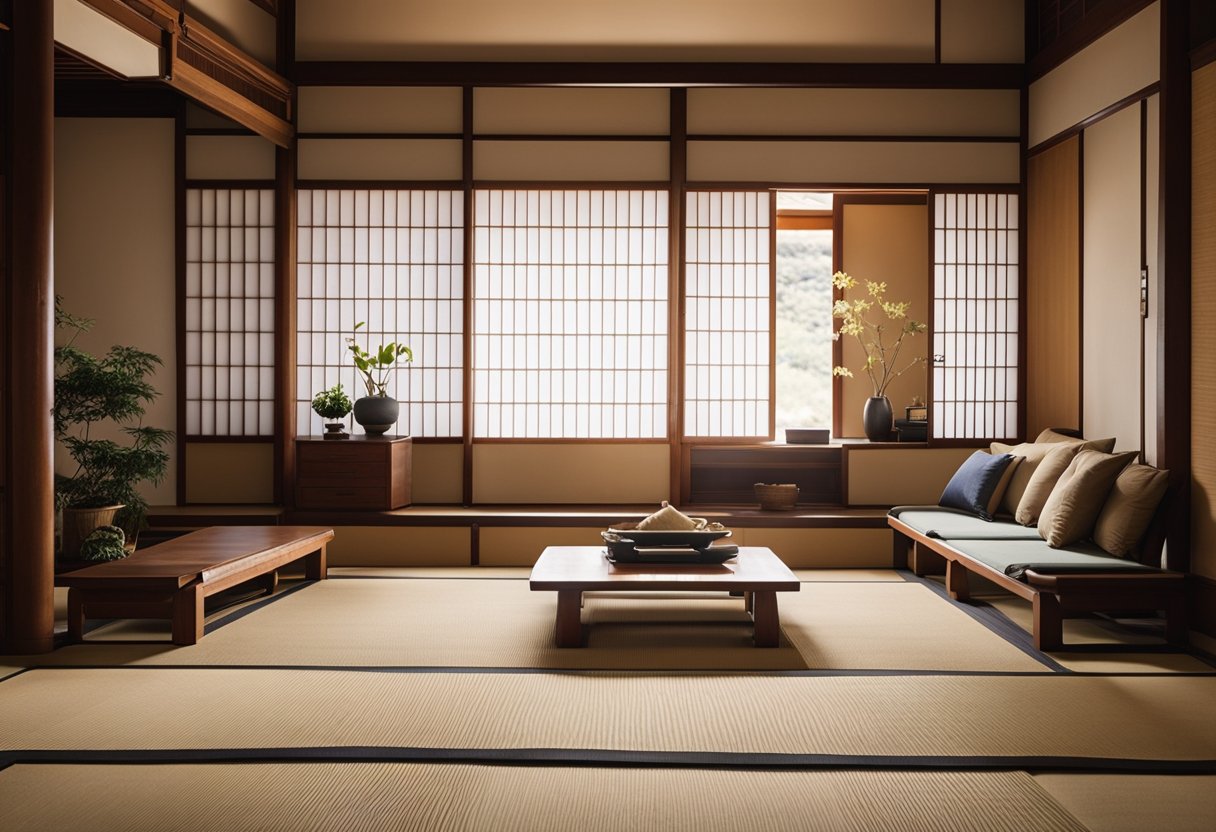
Designing a tatami living space can be an exciting and fulfilling experience. It involves creating a serene and minimalist environment with a touch of Japanese tradition. Here are some tips to help you create your tatami living space.
Furniture and Decor
When designing your tatami living space, it’s important to choose furniture and decor that complement the minimalist design. A futon is a great choice for a tatami room as it can be easily folded and stored away, creating more space. Cushions, zabuton, and low tables are also great options for seating arrangements.
Sliding doors, fusuma, and shoji screens are great for partitioning your tatami room. You can also incorporate wooden frames and translucent paper to create a traditional Japanese feel. A tokonoma, or alcove, can be used to display flower arrangements or paintings, adding a touch of elegance to your tatami living space.
Maximising Space and Light
Maximising space and light is essential when designing a tatami living space. To create a more open and spacious atmosphere, avoid cluttering your living space with too much furniture. Instead, opt for minimalist design and simplicity.
Natural light is also important when designing your tatami living space. You can maximise natural light by using shoji screens and rice paper blinds. Additionally, you can use lattices to create a pattern of light and shadow, adding depth and texture to your tatami living space.
Incorporating Traditional and Modern Elements
When designing your tatami living space, you can incorporate both traditional and modern elements. For example, you can use a kotatsu, a low table with a built-in heater, to create a warm and cozy atmosphere during the colder months. You can also use glass and hanging scrolls to add a modern touch to your tatami living space.
To create a multi-functional space, you can use partitions, chigaidana, and oshiire to separate different areas of your tatami living space. You can also use shouji screens to create a kids’ playroom or study area.
Examples of traditional Japanese homes and ryokan can provide inspiration for your tatami living space. Remember to keep in mind the season and the placement of furniture and decor to create a harmonious and tranquil living area.
In summary, designing a tatami living space involves creating a minimalist and tranquil environment with a touch of Japanese tradition. By incorporating furniture and decor that complement the minimalist design, maximising space and light, and incorporating traditional and modern elements, you can create a beautiful and functional tatami living space.
Frequently Asked Questions
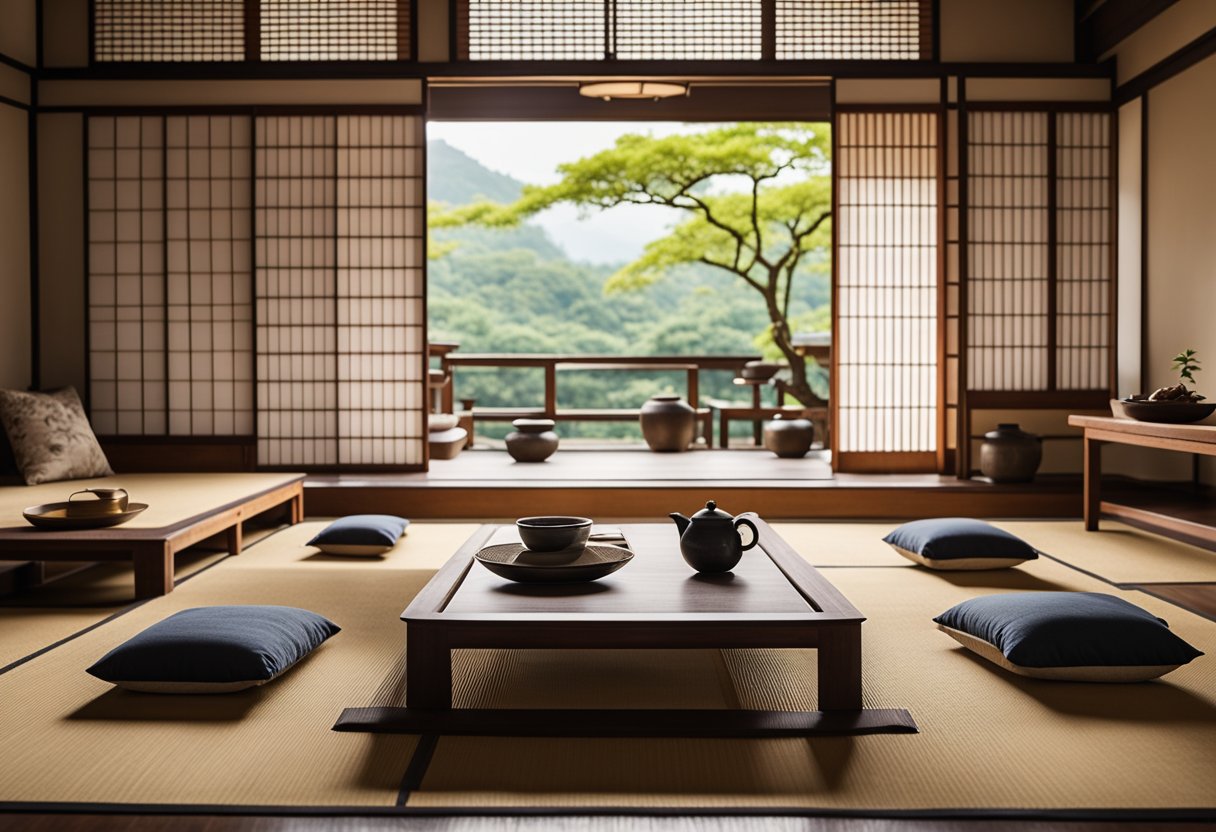
How can I integrate modern furnishings into a tatami living room?
Integrating modern furnishings into a tatami living room requires a careful balance between traditional and contemporary elements. You can achieve this by choosing modern furniture pieces that complement the natural feel of the tatami mats. For example, you can use a low-profile sofa with clean lines and neutral colours to create a minimalistic look. You can also add a modern coffee table or an accent chair to bring in some contrast and visual interest.
What are creative ways to utilise tatami mats in a contemporary living space?
Tatami mats can be used in many creative ways to enhance the aesthetics of a contemporary living space. For instance, you can use them as a wall covering to create a warm, textured look. You can also use them as a floor covering in a specific area of the room to create a designated seating or lounging area. Additionally, tatami mats can be used to create a platform bed or as a headboard to add a touch of Japanese-inspired design to your bedroom.
How do you maintain a tatami floor in a high-traffic living room?
Maintaining a tatami floor in a high-traffic living room requires regular cleaning and proper care. You should avoid wearing shoes on the tatami mats to prevent dirt and debris from accumulating. Instead, you can wear slippers or socks to protect the mats. You should also avoid placing heavy furniture on the mats to prevent damage. To clean the mats, you can use a soft brush or vacuum to remove dirt and dust. You can also wipe the mats with a damp cloth, but avoid using harsh chemicals or abrasive cleaners.
What are the best table designs for a room with tatami flooring?
The best table designs for a room with tatami flooring are those that are low-profile and complement the natural feel of the tatami mats. You can use a traditional Japanese low table called a chabudai or a contemporary coffee table with clean lines and minimalistic design. A round table with a glass top can also be a great option as it allows the tatami mats to show through, creating a visually interesting effect.
How does one effectively use space in a 4.5 tatami living room?
Effectively using space in a 4.5 tatami living room requires careful planning and consideration of the room’s layout. You can create a designated seating or lounging area by using tatami mats to define the space. You can also use low-profile furniture pieces to maximise the available space and create a sense of openness. Additionally, you can add storage solutions such as built-in shelves or cabinets to keep the room clutter-free.
What are the essential elements of a Japanese-style living room?
The essential elements of a Japanese-style living room are simplicity, minimalism, and harmony with nature. A Japanese-style living room typically features tatami mats, shoji screens, and wooden furniture made of cedar or cypress. Large windows and natural light are also important elements as they create a soft, warm atmosphere that changes with the time of day. Plants and natural materials such as bamboo or stone can also be used to bring in some greenery and texture.

